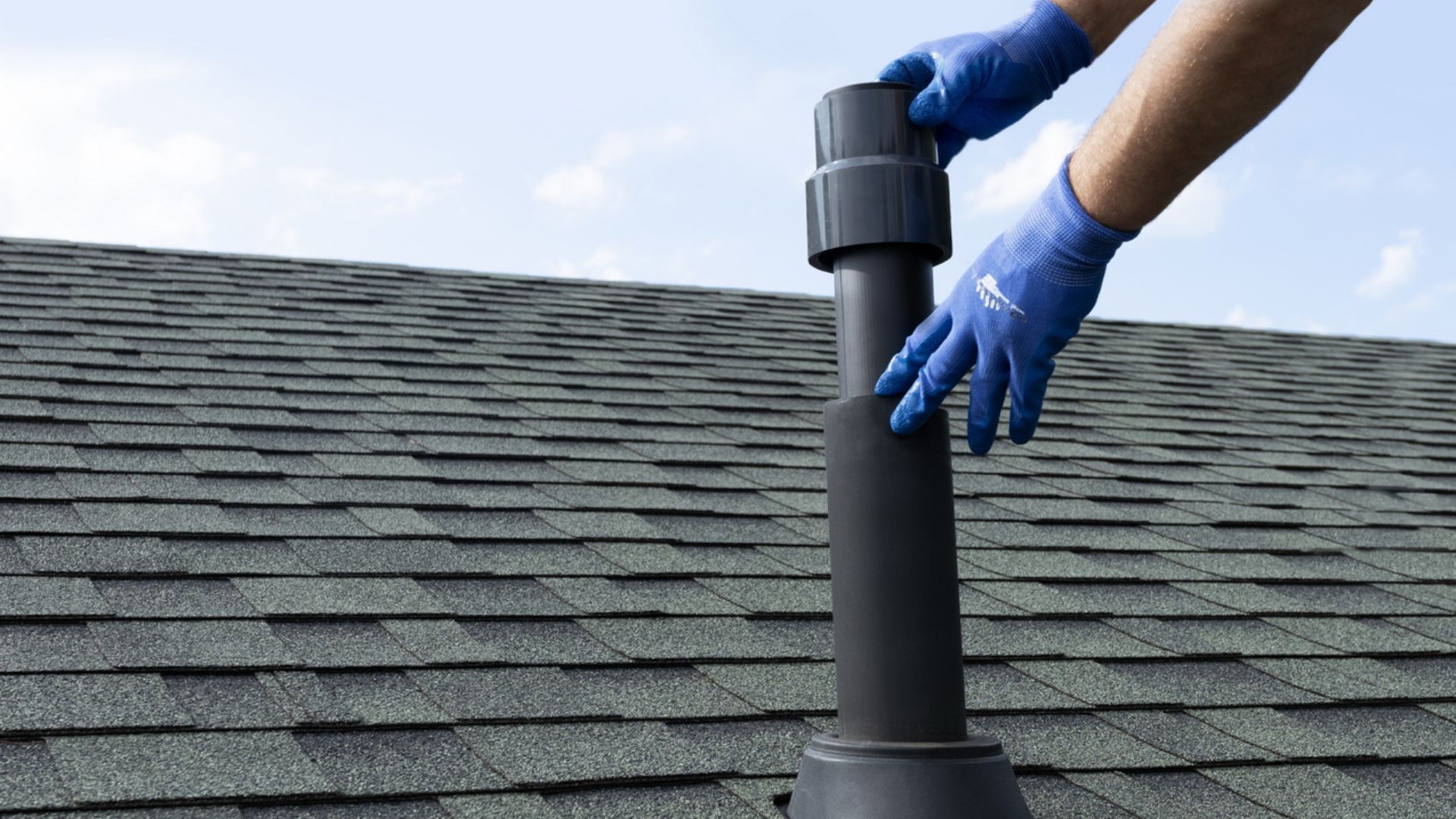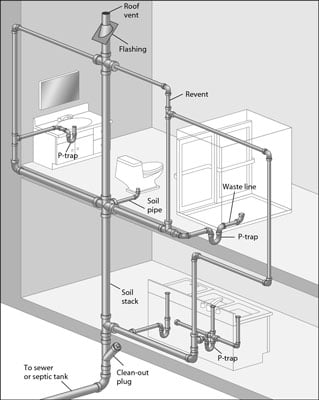The Significance of Ventilation in Residential Plumbing Systems
The Significance of Ventilation in Residential Plumbing Systems
Blog Article
The publisher is making a number of good pointers relating to Essential Plumbing Vent Pipes: Understanding Their Role overall in this post on the next paragraphs.

Proper air flow in pipes systems is usually neglected, yet it is essential for maintaining the capability and safety of your home's pipes. Ventilation helps control air pressure, stop the buildup of damaging gases, and ensure the efficient removal of waste. In this guide, we will explore the importance of proper pipes ventilation, how it functions, and the benefits it gives your plumbing system.
Comprehending Air Flow in Plumbing
Ventilation in pipes describes the network of pipes that enable air to move with the drainage system. These vents serve several functions, consisting of regulating air pressure within the pipes, preventing sewer gases from getting in the home, and assisting in the smooth circulation of wastewater.
Exactly How Ventilation Works in Pipes Equipments
Air Pressure Regulation
Proper ventilation maintains balanced air pressure within the plumbing system. When water streams through pipelines, it displaces air. Without adequate air flow, this displacement can create unfavorable pressure, leading to reduce drains pipes or siphoning of water from traps, which can cause undesirable smells to permeate right into the home.
Preventing Sewer Gas Buildup
Among one of the most important functions of plumbing vents is to stop drain gases, such as methane and hydrogen sulfide, from accumulating within the home. These gases can position significant health dangers and are highly combustible. Vent pipes enable these gases to escape safely outdoors.
Aiding in Waste Removal
Air flow aids in the efficient removal of wastewater by avoiding airlocks in the water drainage system. When air can move openly with the vents, it enables water and waste to flow smoothly through the pipes, reducing the danger of blockages and back-ups.
Kinds Of Plumbing Vents
Key Heap Vent
The main pile vent, additionally called the vent pile, is the primary air vent in a plumbing system. It expands from the main drainpipe align with the roofing, allowing gases to run away and fresh air to get in the system.
Branch Vent
Branch vents link to the major stack air vent and serve individual fixtures, such as sinks, toilets, and showers. These vents ensure that each component has ample air flow to operate effectively.
Air Admission Shutoff (AAV).
An Air Admittance Shutoff (AAV) is a one-way valve that allows air to get in the plumbing system without the need for a conventional vent pipe extending with the roof. AAVs are generally utilized in restorations or locations where installing a basic vent is not practical.
Indicators of Poor Air Flow in Plumbing.
Slow Draining Fixtures.
If your sinks, bathtubs, or bathrooms are draining gradually, it could be a sign of bad ventilation. Poor air flow can create a vacuum cleaner effect, making it tough for water to drain properly.
Gurgling Seems.
Gurgling sounds originating from drains pipes are typically an outcome of air being sucked through water traps because of adverse stress in the pipes. This is a clear indication of inadequate ventilation.
Unpleasant Odors.
Sewer smells inside your home are a warning that your pipes system is not effectively ventilated. This can mean that sewer gases are not being adequately aired vent outside, resulting in possibly unsafe conditions.
Common Ventilation Errors.
Insufficient Vent Sizing.
Utilizing undersized vent pipes can lead to poor air circulation and stress inequalities in the system. It's vital to make use of vents that meet the specific demands of your pipes system.
Improper Vent Placement.
Putting vents too much from the components they serve can reduce their performance. Correct placement makes certain that air can flow openly and successfully with the system.
Ignoring Code Demands.
Building ordinance offer certain guidelines for plumbing ventilation. Neglecting these codes can lead to a system that stops working to function correctly and might lead to expensive fixings or health hazards.
Benefits of Appropriate Air Flow.
Boosted System Efficiency.
Correctly ventilated plumbing systems operate much more effectively, with fewer blockages, faster draining pipes, and less stress on the pipes. This effectiveness extends the lifespan of the plumbing system.
Improved Air Quality.
By preventing sewer gases from entering your home, correct ventilation contributes to better indoor air high quality, making your living atmosphere healthier and extra comfortable.
Avoiding Water Damages.
Appropriate ventilation assists prevent water from being siphoned out of catches, which can result in drain gases getting in the home and causing water damage gradually.
Steps to Ensure Correct Air Flow.
Consulting Pipes Codes.
Always get in touch with regional plumbing codes when making or modifying your pipes system. These codes supply the required standards for appropriate airing vent and guarantee your system meets safety and security criteria.
Regular Assessment and Maintenance.
Normal assessments can help determine possible air flow concerns before they become major problems. Maintenance tasks, such as cleaning up vent pipes and checking for obstructions, are essential for keeping the system in good working order.
Specialist Installation.
For new setups or major alterations, it's wise to hire a specialist plumber. They have the expertise to guarantee the ventilation system is correctly designed and installed according to code.
Conclusion.
Proper air flow is an essential element of any type of plumbing system, making sure that it functions efficiently and securely. By comprehending the value of ventilation, recognizing the indications of poor air flow, and taking steps to maintain your system, you can protect against expensive issues and secure your home's air quality.
4 Things You Should Know About Your Plumbing Vents
What Plumbing Vents Are
Also called a vent stack, a plumbing vent is a vertical pipe attached to your drain line that runs through your roof. The plumbing vent pipe, or plumbing air vent, removes gas and odors from your plumbing system and allows fresh air to enter the pipes, helping the water to flow out of the drain pipes.
What Plumbing Vents Do
Plumbing vents have two basic functions. One of which is to allow unpleasant smelling wastewater and sewer gasses to escape your plumbing system instead of entering your home. Plumbing vent pipes are typically located on roofs, away from windows, to ensure the fumes exit the home completely.
The other function of the plumbing vent is to move fresh air into your plumbing system. This helps move water through every plumbing fixture in your house, like toilets and sink drains. Think of the way in which you need to let a little air into the bottle as you pour soda in order to make the drink flow smoothly.
Different Types of Plumbing Vents
True vent: This is the most common vent option. In simplest terms, a true vent is a vertical pipe attached to your drain line that exits through the roof. They often function as the main vent that other fixtures can connect to. Re-vent pipe or auxiliary vent: Attached to the drain line near specific plumbing fixtures, re-vent pipes run up and over to connect to the main vent. Common vent: Two plumbing fixtures installed on opposite sides of a wall are typically tied into the vent stack using something known as a sanitary cross. Wet vent: This venting option operates as a drain pipe and a vent at the same time. Wet vent drainage systems drain water from one fixture while venting the air from another. Although they’ve been used for over 100 years, wet vent systems have only recently been added to the plumbing code in many areas. If you’re planning on installing one in a bathroom remodel, make sure you check your local code prior to construction. Loop vent: For free-standing fixtures like kitchen island sinks, loop vents are ideal. These vent pipes run under the floor, rise from the P-trap, and create a loop inside the cabinet sink. Air admittance valve: An AAV is a one-way mechanical valve typically installed at the site of the plumbing fixture. AAVs allow venting to occur without having to tie into a larger venting system. They’re ideal for venting fixtures where you aren’t able to easily connect to an existing vent system. Common Plumbing Vent Issues
Although vent pipes typically don’t have water flowing through them, they’re still subject to many typical plumbing issues. For example, clogs are one of the most common problems associated with sewer vent pipes. If your vent pipe gets clogged, all of your plumbing fixtures tied into the vent stack will be affected.
A sink with a slow drain that bubbles and gurgles or a strong sewage smell around your toilet are both indicators that your toilet vent pipe is clogged. Because most vent pipes exit through the roof, old leaves, twigs or even a bird’s nest could be clogging the pipe.
Clogs in your vent pipe system cause a buildup of negative pressure, meaning that water won’t be able to flow out of your home very well. It’s similar to putting your finger over the opening of a straw to trap water inside. When you remove your finger, the water is able to flow out of the straw.
If you suspect you have any blockage in your vent, make sure you have a professional come examine the situation. Left unchecked, a blocked air vent can lead to other costly repairs, like leaks and sediment buildup.
Under Pressure
Pipe vents are essential aspects of a home’s plumbing system. Owning a home means learning about all sorts of things you never put much thought into before. But by understanding as much as you can about the important systems of your home, you can keep those budgets intact and those anxiety levels low.
https://www.homeserve.com/en-us/blog/home-improvement/plumbing-vents/

I came across that post about The Upsides of Proper Ventilation in Plumbing Design when doing a search on the web. Those who enjoyed reading our page please consider to share it. Thank-you for going through it.
Call Us Now Report this page